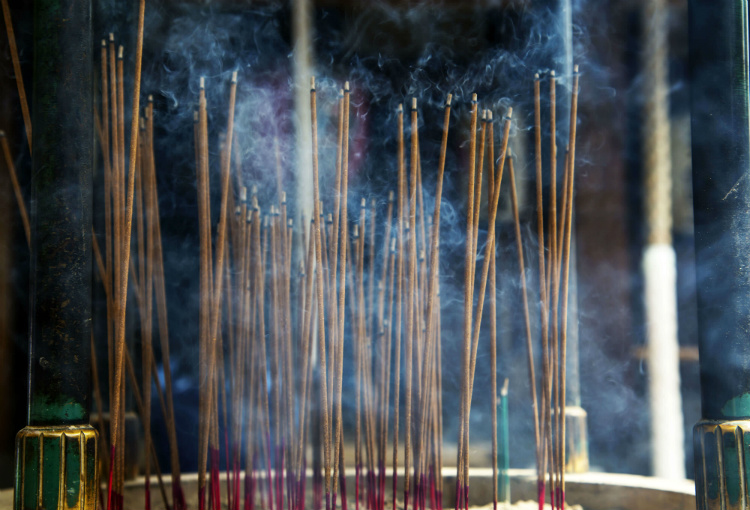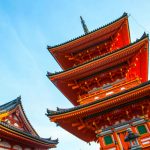We love Japan! We’re returning to its beauties on daily basis. OK, to be frank, Milica is the only member of our team that has actually visited Japan. Rest of us, well, we keep traveling in our own way, through photos and videos.
To tell you the truth, it’s not an easy place; from a content moderators’ perspective. Commercial photography is not allowed on the grounds of many Japanese heritage sites. The Land of the Rising Sun has a wonderful history and unique culture and here in MOD381 we are fully dedicated to respect that. And so, we set off on a picturesque journey.

Yes, we’re talking some renown trademarks, the icons of modern Japan – Shinkansen bullet trains, Kikkoman soy sauce, or Pac-Man – but also the traditional ones.
We walked the gardens of Tokyo Imperial Palace, Miyajima, and Ise Grand Shrine. We catch the distinct nuances between the castles of Himeji, Nagoya and Osaka, all too similar to the cynical Central European eye.
Now, we’re bringing you the list of seven incredible facts about Japanese temples and shrines that we learned through photography.

1. Temples vs Shrines
Did you know that, in Japan, the word temple always refers to a Buddhist temple? Places of Shinto worship are called shrines.
There are over 80,000 shrines and nearly as many temples. Kyoto alone is estimated to have well over 2,000 places of worship. One of them, Kiyomizu, is opening its gates as early as 6am, while most of people are still sleeping. Even in Japan.

2. Evel Desires
What do people actually do in these temples and shrines? For example, at midnight, on Shōgatsu (New Year’s Eve), the Buddhist temples ring their bells 108 times to drive away the 108 evil desires that humans fall prey to. This event is called Joya no Kane and it is broadcasted on the national radio.
While you’re at one of the temples, grab yourself an Omikuji. This is a piece of paper that tells your fortune. Don’t worry, if you get a bad one, you can just leave it there and pretend nothing happened.

3. Pieces of Puzzle
Japanese temples, some of them centuries old, were made without any nails or screws. None! Instead they were constructed with interlocking pieces.
The Kinkaku-ji, known as the Golden Pavilion of Kyoto, or the Hōryū-ji, once one of the powerful Seven Great Temples in Ikaruga, were assembled like a puzzle.

5. The Skilled Koreans
Kongō Gumi, Buddhist temple building firm headquartered in Osaka, founded in 578 by skilled Korean immigrants, used to be the oldest family-run business in the world well into the 21st century. It operated for over 1,400 years (until it was absorbed as a subsidiary of Takamatsu in 2006) and participated in the construction of many famous buildings, including the 16th-century Osaka Castle.
Today, the oldest family-run business globally is still Japanese: the hot spring hotel Nishiyama Onsen Keiunkan, founded in 711, in Yamanashi prefecture.
6. Blood Soaked Ceilings
When you visit a small number of Kyoto’s temples, warriors’ blood will be above your head. Genkoan Temple, for instance, is nearly four hundred years old, blackened with age, but those ceilings are still awash with blood.
According to Alan J. Wiren, an Osaka-based American journalist, you can find the imprints of faces, hands, and feet. “It is macabre, and that might be enough of a motivation, but if you take a tour of these temples, you will encounter some exquisite and uniquely Japanese art, and paradoxically, become acquainted with a gentler side of the Japanese persona.”
7. Aromatic Properties

It’s not only what you see. Sure, we cannot feel the fragnance merely from the digital photos, however the atmosphere itself made us research a bit. What you smell around the temples and shrines is the Japanese incense, an aromatic biotic material that releases fragrant smoke when burned. It is usually made from aromatic plants such as agarwood, sandalwood, Borneo camphor, benzoin, clove, star anise, rhubarb, cinnamon, licorice. It’s appreciated for its aromatic properties and ability to repel insects.
How this thing works? Firstly, stick the incense in the ash of the large incense burner, and, secondly, fan some smoke toward yourself. Aim for areas suffering from ailments, they say.
8. Lucky Seven
Yes, you’re right. This is indeed a list of seven facts, yet it does end with number eight. There’s no number four on the list. Four is an unlucky number in Japan because it sounds like shi (死) which means – death.
Reversely, seven is always – the Lucky Seven. Although less known, eight is also a lucky number in Japan, due to its shape – 八. Called suehirogari (末広がり), it widens at the bottom resembling of prosperity and growth.
What do you think? Do you have a favorite destination of your own? If you do, let us know. We would like to hear all about it!
Till the next (virtual) journey.
Yours,
MOD381.












